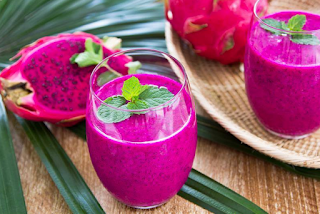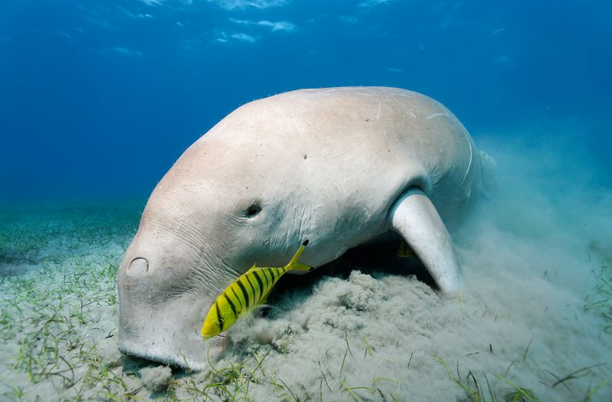I want to show you some of health benefit of Jack fruit. Do you know Jack fruit ? Did you ever ate it before ? It's importance for our health... If you have time please read this texts you will understand the important of Jack fruit.
Jackfruit is one of its own kind of tropical fruits, recognized for its unique shape, size, and fruity flavor of its bulbs that can be appreciated from a distance. The fruit is deliciously sweet in taste. In common with other tropical fruits such as durian, banana, etc., it is also rich in energy, dietary fiber, minerals, and vitamins and free from saturated fats or cholesterol, making it one of the healthy summer treats to relish!
Botanically, this popular Asian tropical fruit belongs to the family of moraceae, genus: Artocarpus and is closely related to figs, mulberry, and breadfruit. Scientific name: Artocarpus heterophyllus.
Jackfruit is a huge tree that grows to as high as 30
meters, larger than mango, breadfruit etc. It is believed to be indigenous to
the Southwestern rain forests of India. Today, it is widely cultivated in the tropical
regions of Indian subcontinent, Thailand, Malaysia, Indonesia and Brazil for
its fruit, seeds, and wood. The tree grows best under tropical humid and rainy climates but
rarely survives cold and frosty conditions.
In a season, each tree bears as many as 250 large fruits, supposed to be the largest tree-borne fruits in the world. The fruit varies widely in size, weigh from 3 to 30 kg, and has oblong or round shape measuring 10 cm to 60 cm in length, 25 to 75 cm in diameter. While unripe fruits are green, they turn light brown and spread a strong sweet, fruity smell once ripe.
As in durian fruit, jackfruit outer surface too is covered with blunt thorn-like projections, which become soft as the fruit ripe.
Its interior consists of eye-catching orange-yellow color edible bulbs. Each bulb consists of sweet flesh (sheath) that encloses a smooth, oval, light-brown seed. There may be as many as 50 to 500 edible bulbs embedded in a single fruit interspersed in-between thin bands of fibers.
Jackfruit seed is encased inside a thin, transparent outer cover. It largely compose of starch and protein. Each seed measures about 2 to 4 cm in length, and 1 to 3 cm in thickness.
Almost all the parts of the tree secrete white sticky latex like milk (juice) upon infliction of injury.
Health benefits of jackfruit
-
100 g of edible jackfruit bulbs provide 95 calories. The fruit is made of soft,
easily digestible flesh (bulbs) made up of simple sugars like fructose and sucrose that when eaten replenishes energy and
revitalizes the body instantly.
-
Jackfruit is rich in dietary fiber, which makes it a good bulk laxative. The fiber content helps
protect the colon mucous membrane by binding to and
eliminating cancer-causing chemicals from the colon.
-
Fresh fruit has small but significant amounts of vitamin-A, and
flavonoid pigments such as carotene-ß, xanthin, lutein and cryptoxanthin-ß. Together, these
compounds play vital roles in antioxidant and vision functions. Vitamin
A is also required for maintaining integrity of mucusa and
skin. Consumption of natural fruits rich in vitamin-A, and carotenes
has been found to protect from lung and oral cavity cancers.
-
Jackfruit is a good source of
antioxidant vitamin-C, provides about 13.7 mg or 23% of RDA.
Consumption of foods rich in vitamin C helps the body develop
resistance against infectious agents and scavenge harmful free radicals.
-
It is one of the rare fruits that is rich in B-complex
group of vitamins. It contains very good amounts of vitamin B-6 (pyridoxine), niacin, riboflavin, and folic acid.
-
Further, fresh fruit is a good source of potassium, magnesium,
manganese, and iron. Potassium is an important
component of cell and body fluids that helps controlling heart rate and
blood pressure.
Jackfruit seeds:
Jackfruit seeds are indeed very rich in digestible starch,
protein and minerals. In general, the seeds are gathered from the ripe
fruit during summer,
sun-dried and stored for use in rainy season in many parts of
South-Indian states. Again, in these areas, jackfruit seeds can be
employed in
variety of recipes where they generally are eaten either by roasting as
a snack or added to stews (curries) in place of lentils.
Preparation and serving method
The fruit is cut in a similar fashion like other large size fruits like watermelon. White, gummy latex oozes from the cut ends even in ripe fruit but to a lesser extent than in green unripe one. This latex problem can be overcome by applying little coconut oil on the hands while separating bulbs since protective gloves would not help.
Another great way of dealing with latex problem is mopping or rubbing the cut sections with lemon slice or gently drowning in a bowl of acidulated water. The thick rind that runs through the middle of the fruit is then removed, and the whole section is gently twisted few times in order to loosen individual bulbs.
Each edible bulb is made of thick orange-yellow flesh; cut open it with small knife or
split the bulb with fingertips vertically. Inside each bulb,
you find a thick light brown color seed; keep it aside and enjoy the
delicious flesh (sheath).
Here are some serving tips:
Source: http://www.nutrition-and-you.com/


















